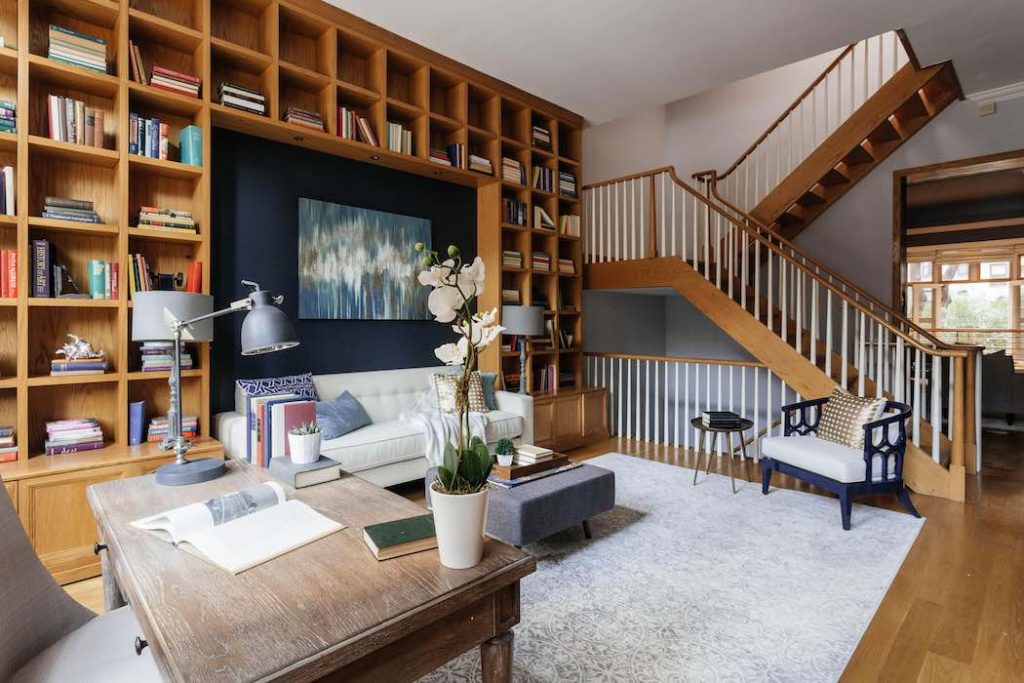As part of a regular series powered by Dell Small Business, BetaKit asked business leaders to share their experience starting a business, and how their solution is disrupting an industry.
Three countries, eight cities, and 15 moves later, Karen Lau, co-founder and CTO of Furnishr, had enough. She and co-founder Michael Van had experienced the struggle of moving into new apartments too many times: searching for design inspiration, finding affordable furniture, taking time off work to wait for deliveries, and asking friends to help assemble everything. None of the available options were easy.
Lau shared how her experiences drove her to create Furnishr and how the company is using technology to disrupt the furniture and design space.
Fake it ‘till you make it
Like many successful startups, Lau and Van started Furnishr to solve a problem they had experienced in their own lives. Having moved 15 times collectively, the pair was tired of having to design, buy, and assemble everything themselves, and on top of that needing to coordinate with many different companies to get it all done.
“There was an opportunity to move the industries forward by leveraging the latest technology.”
“These companies don’t talk to each other,” Lau said, noting that she thought they should.
Lau and Van started Furnishr in Toronto in 2016 to build a turn-key way to furnish an apartment. On the Furnishr platform, users can find a style of room, shop for furniture, and schedule delivery and assembly all in one place.
“The furniture and design industries were so behind in tech,” Lau said. “There was an opportunity to move the industries forward by leveraging the latest technology to develop tools that “create a seamless convenience-focused experience.”
But before diving in and building the technology, the pair validated their idea (as many startups do) by faking it on Craigslist. Lau remembers putting up an ad of a beautiful living room on the classifieds website. In the ad, she told buyers that the whole room was for sale and that she’d also deliver and assemble all the furniture. Overnight, she got 20 replies. Most responses were from people who were relocating to a different city and who had to furnish their homes quickly. Today’s advancements in connected devices and e-commerce made it possible for Lau to build a company that makes her Craigslist offer available to anybody.
Complicated tech for a simple experience
“In the end, it’s about a simple experience,” Lau said.
Lau, who studied interior design and has worked on complex projects in past roles, recounted writing down the steps to furnish a new home from start to finish. She would use Pinterest for design, and sourced furniture from various retailers. The hardest part, Lau said, was figuring out who would ship the furniture. Would she try to find a friend with a big car? Or would she pay for store delivery? And then there was the question of who would assemble the furniture. She could use Jiffy or TaskRabbit – apps that connect users to service providers (like handymen) – but again, that was another company she had to work with.
Furnishr works with all of the above industries so that customers only have to work with one.

When on the Furnishr platform, users are prompted to fill out a quick online questionnaire about their style preferences, room, and budget. Furnishr then uses an assisted design tool to choose the best package for them. Real-life designers review the package, then the customer is sent a custom proposal.
The company uses automated technology to talk to all parties. They have partnered with select suppliers for each step of the process and integrated into their systems, creating a seamless process for customers.
Lau said her team calculated the average amount of time a customer might spend on furnishing their home and found that Furnisher can save them up to 10 times their time and money.
Shifting an industry
Lau said consumers were excited to learn that Furnishr could furnish their home in a day, but that industry partners were harder to convince. Suppliers simply didn’t believe they could succeed this way.
“The industry isn’t leveraging technology to get ahead of the game. We had customers first, before suppliers,” Lau said. The CTO explained that the company used customer testimonials and tests (like the one on Craigslist) to convince suppliers that they should work with Furnishr. And it worked.
“Even big players like Wayfair and IKEA are now launching room designs and packages.”
Today, Lau has noticed many startups popping up doing exactly what Furnishr does. “People are doing what we do now because it makes sense,” she said. “Even big players like Wayfair and IKEA are now launching room designs and packages.”
When asked what she thinks is the next big industry trend, Lau said it’s all about on-demand and simplified experiences. Thanks to the rapid increase of connected devices, consumers demand simple and convenient experiences in all areas of their lives; everything from content to commerce. The challenge for businesses is to be able to grab the attention of people who are time-constrained and being pulled in multiple directions.
By using technology to connect the dots in the furniture and design space that has been operating in silos for years, Furnishr can develop a more flexible and personal experience for its users. Lau noted that while she’ll explore new technology as it’s available, trending tech like AI and AR will never be implemented “just because.”
Instead, their mission is clear: use tech to turn houses into homes. “We want you to start living in your home as quickly as possible.”
Image courtesy Furnishr by Zlatko Cetinic – Images Made Real.


